This is part two of a series. Read part one here.
Cofan Dureno
Before heading to the Cofan community of Dureno, Donald Moncayo took us to Auguarico 4. This was a well site that was built by Texaco and operated solely by Texaco for about 8 years. PetroEcuador never pulled even one single gallon of oil out of this well site.
This is the proverbial smoking gun, the key evidence that deflates every defense Chevron, which bought Texaco in 2001, has ever tried to make to avoid paying for its toxic mess in Ecuador.
PetroEcuador has begun to use this well as a re-injection site, shooting its toxic drilling waste back into the Earth rather than dumping it in open, unlined pits like Texaco did. Donald opened the spigot at the wellhead and poured out some formation water so that we could see what it looked like—in this case, it was oily black and reeking of petroleum, though he said it’s not always so dark in color.
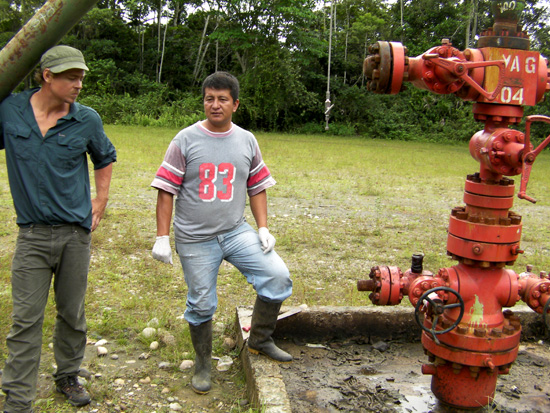
Next, Donald took us to the pit that Texaco was dumping this formation water into while the company was operating the well. Though the rainforest has grown over it, there are spots where crude-black oil waste is still perfectly visible, staining the vegetation and seeping to this day into the forest floor.
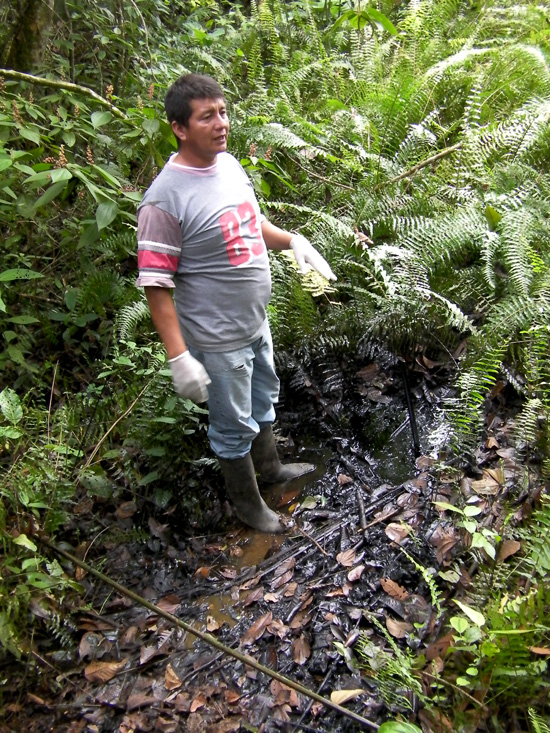
The “goose-neck” pipe is still there, too, and still draining excess water off of the open storage pond.
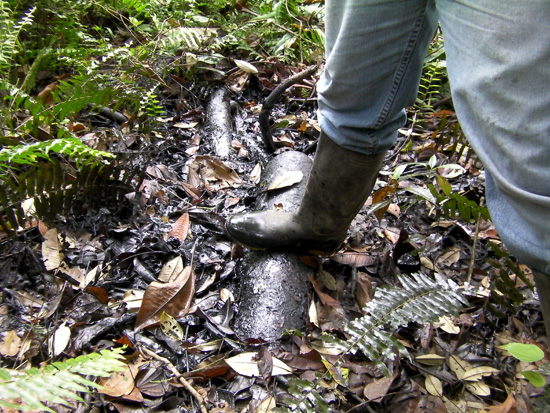
Walk down the hillside and you can see where the pipe discharges the toxin-laced runoff down into a wetland area.
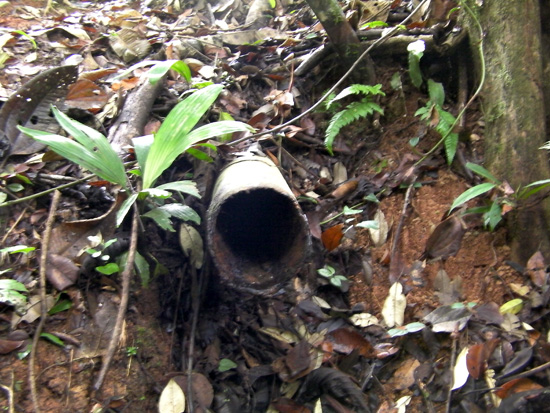
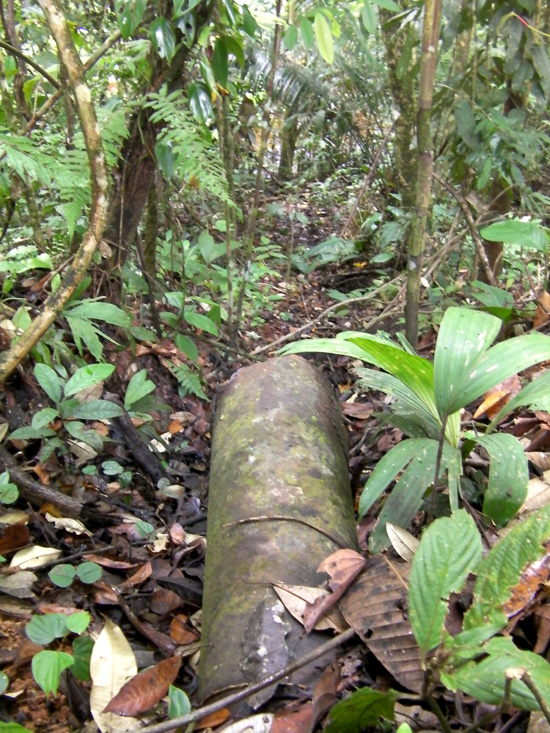
In the documentary Crude, Chevron’s lawyers can be seen claiming that this water is safe to drink. Donald jumped in with his rubber boots on and used a stick to stir up the bottom, much like the workers at Guillermo Grefa’s house did with their hoses. Then Donald swiped his rubber-gloved hand across the top of the water, and sure enough: it was completely black when he held it up to show us.
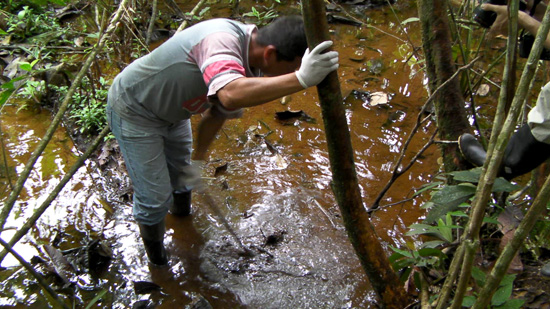
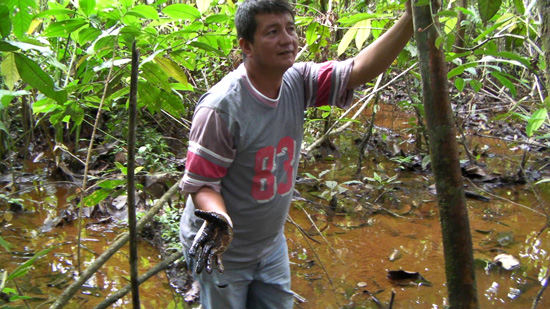
After the Ecuadoreans living with this pollution and their lawyers started challenging Chevron’s lawyers to take a sip of this water they claimed was perfectly safe, the lawyers wised up and started bringing bottles of water so that when challenged to drink it, they could say, “Oh, no thanks, we brought our own.”
Later that day, we arrived at Cofan Dureno after a 3-hour canoe ride. We dropped our bags in the coliseo—a giant concrete slab with soccer goals at either end and a roof covering it. There were kids playing soccer—young kids, none older than 8 probably—and many of us immediately jumped in and played an impromptu game of soccer with them. It was the first of many games we would play with these kids. They were incredibly fun to be around. (And amazingly cute and shy.)
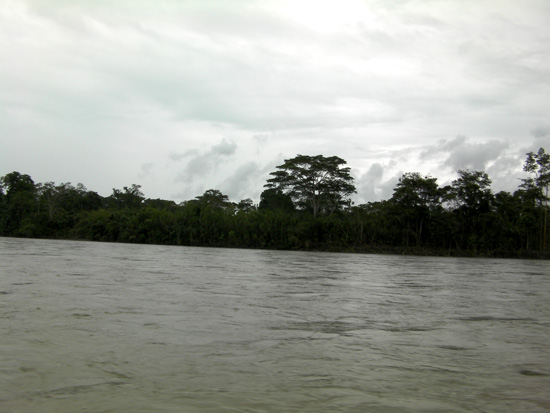
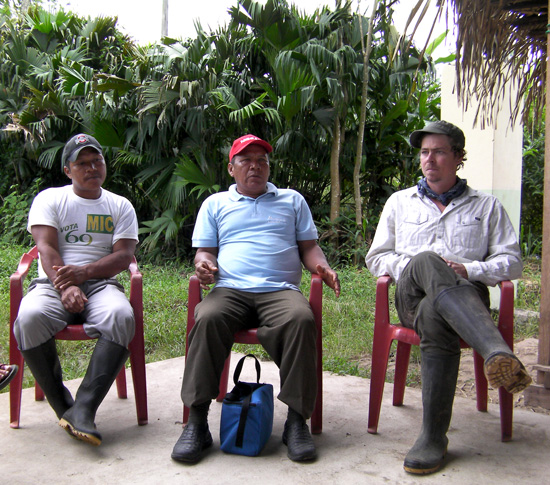
That afternoon and evening we walked around to a few of the ClearWater systems that have been installed in the community. One woman, Lucia, told us that before her system went in, she had stomach problems and diarrhea all the time. Now, those problems have mostly gone away. She’s still not 100% healthy, but doing much better thanks to this source of clean water readily available outside her house.
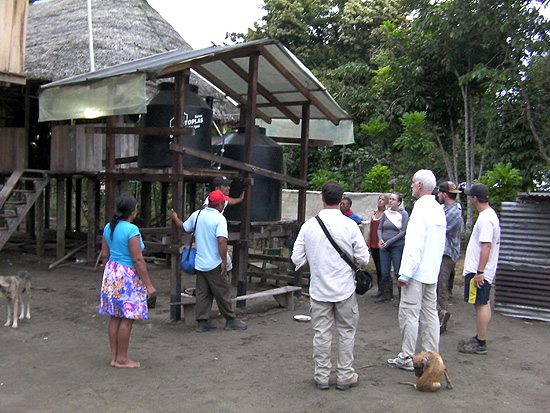
One of our guides, Mitch Anderson (who spearheaded the ClearWater project after leaving Amazon Watch), took us by the house of a woman named Florienda, who wasn’t home at the time. Florienda told Mitch that her ClearWater system has made her feel like she had some kind of security in the world for the first time since her husband died.
We slept that night in another open-aired, covered concrete slab that was the community’s meeting spot before the coliseo got built. Now it appears to be used as a school, as there were Cofan-to-Spanish translation posters hanging around the sides.
All I can say about that night is: Everyone should spend a night in a hammock out in the open in the rainforest at some point in their life. The sounds of the rainforest wildlife, the cool rainforest air, the rain gently falling on the corrugated roof over our heads, and gently swaying all night long led to the best night of sleep I got the whole trip.